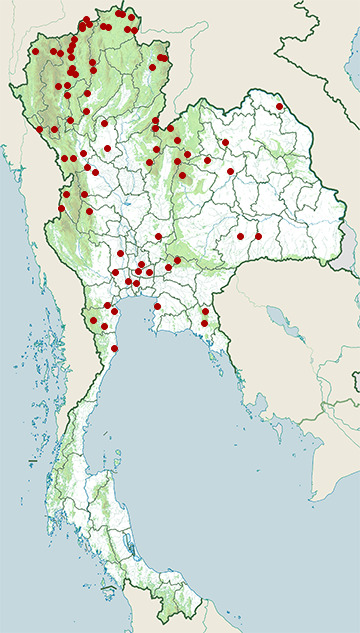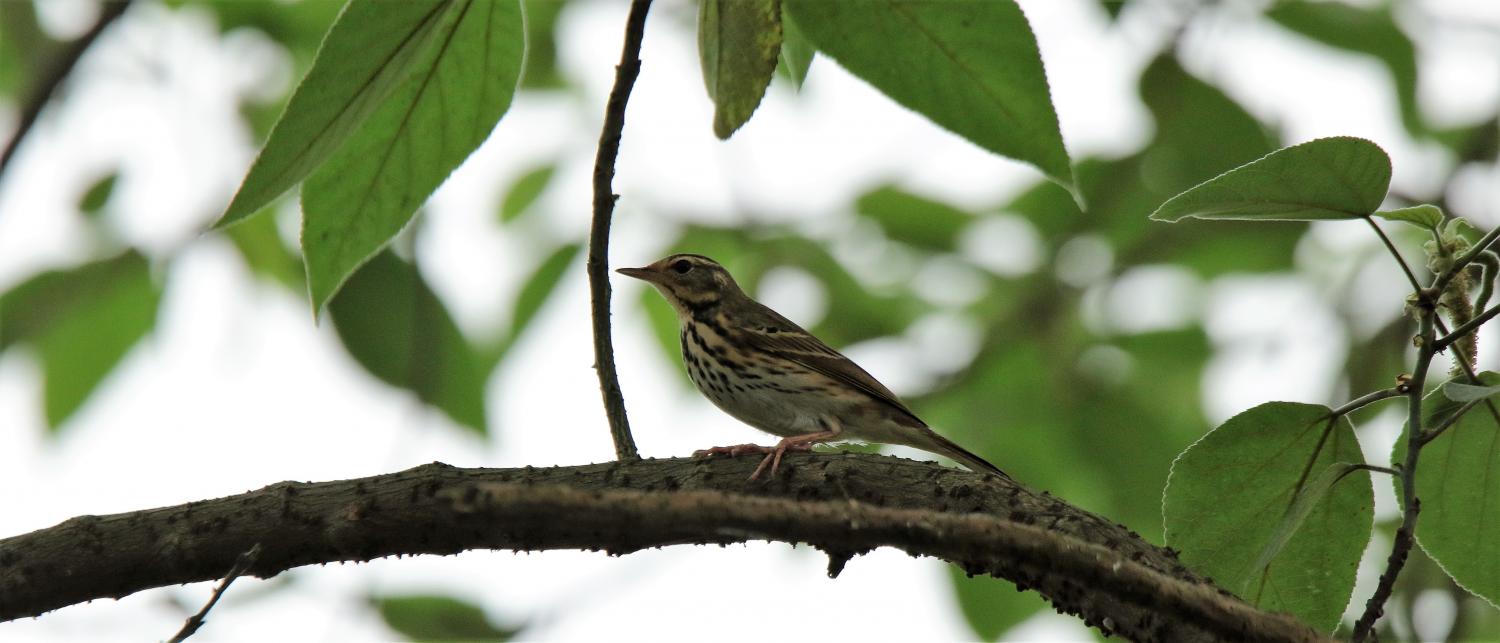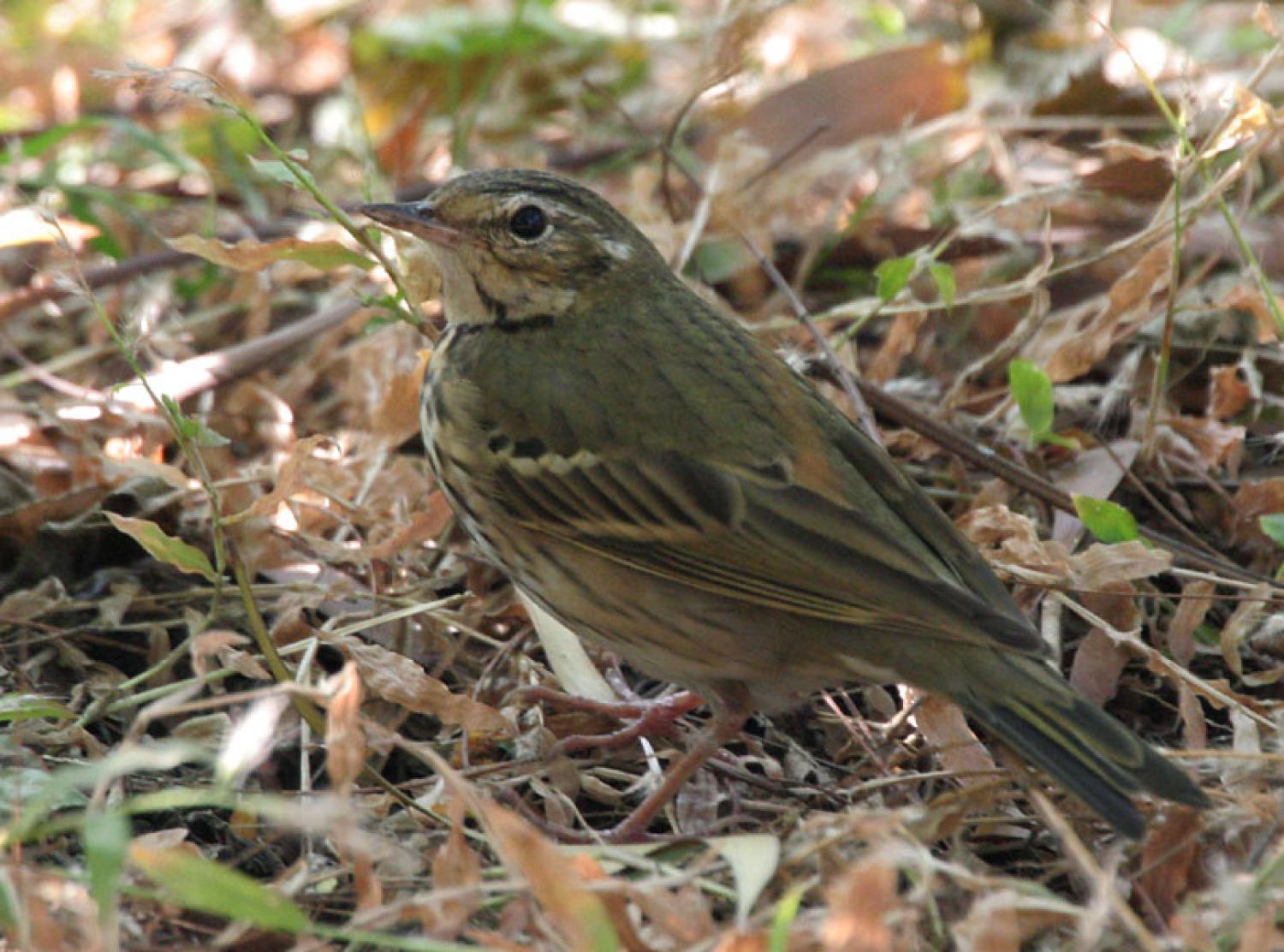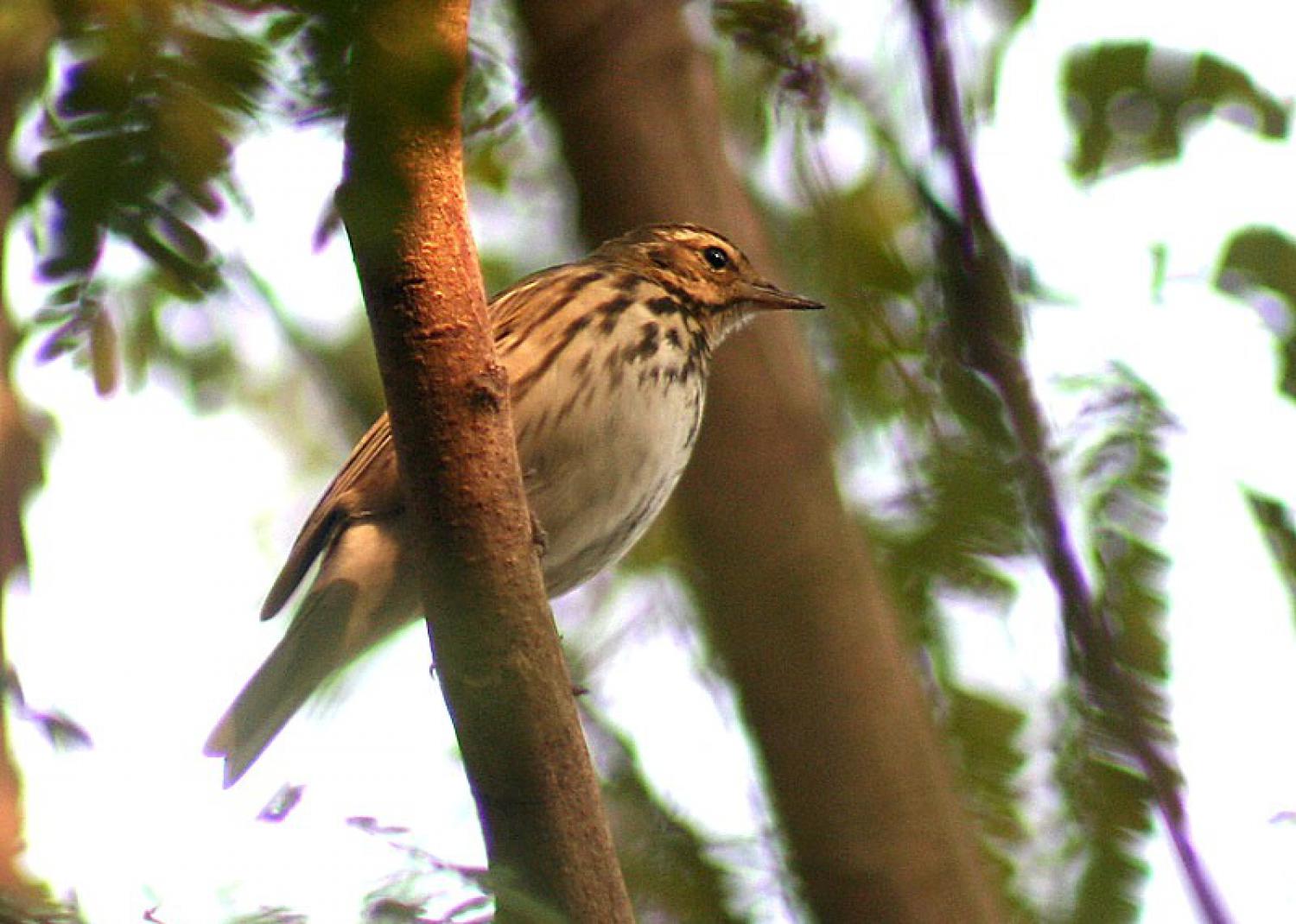Species of Thailand
Olive-backed pipit
Anthus hodgsoni
Charles Wallace Richmond, 1907
In Thai: นกเด้าดินสวน
The olive-backed pipit (Anthus hodgsoni) is a small passerine bird of the pipit (Anthus) genus, which breeds across southern, north central and eastern Asia, as well as in the north-eastern European Russia. It is a long-distance migrant moving in winter to southern Asia and Indonesia. Sometimes it is also called Indian pipit or Hodgson's pipit, as well as tree pipit owing to its resemblance with the tree pipit. However, its back is more olive-toned and less streaked than that species, and its head pattern is different with a better-marked supercilium.
The genus name Anthus is from Latin and is the name for a small bird of grasslands. The specific hodgsoni commemorates English diplomat and collector Brian Houghton Hodgson.
Distribution
- Summer: from Himalayan Pakistan and India, westward through Nepal, into China, north to Gansu province, and eastwards through Korea to Japan, and north through north central Asia into north-eastern Europe (European Russia). Occasionally a rare vagrant in western Europe. Breeds up to 4500m in eastern Nepal.
- Winter: Broad southern region across Asia, from peninsular India, east to Southeast Asia and the Philippines.
- Habitat: Affects open country. Wintering in evergreen woodland, Summers in groves and wooded biotope.
Description
- Size: Sparrow+ (ca. 15 cm)
- Appearance: Greenish brown streaked with darker brown above. Supercilium, double wingbar and outer rectrices whitish. Whitish to buff below streaked with dark brown on breast and flanks. Sexes alike.
- Habits: Seen singly or pairs. Runs about on the ground in search of food and flies up into trees when disturbed. Flight jerky and undulating.
- Call: Song lark-like and uttered on the wing, similar to the tree pipit, but faster and higher pitched. A single tseep or spek, also similar to the tree pipit.
- Food: Insects, grass and weed seeds.
- Food: Largely insects, but will also take seeds.
Nesting
- Season: May to July.
- Nest: a cup of moss and grass placed on the ground under a tuft of grass or boulder. open woodland and scrub.
- Eggs: 3–5, usu. 4, dark brown, spotted darker. Usually two broods are raised.
This article uses material from Wikipedia released under the Creative Commons Attribution-Share-Alike Licence 3.0. Eventual photos shown in this page may or may not be from Wikipedia, please see the license details for photos in photo by-lines.
Category / Seasonal Status
Wiki listed status (concerning Thai population): Winter visitor
BCST Category: Recorded in an apparently wild state within the last 50 years
BCST Seasonal status: Non-breeding visitor
Scientific classification
- Kingdom
- Animalia
- Phylum
- Chordata
- Class
- Aves
- Order
- Passeriformes
- Family
- Motacillidae
- Genus
- Anthus
- Species
- Anthus hodgsoni
Common names
- Thai: นกเด้าดินสวน
Conservation status

Least Concern (IUCN3.1)
Photos
Please help us review the bird photos if wrong ones are used. We can be reached via our contact us page.
Range Map

- Ban Hong Non-Hunting Area
- Bang Pa In District, Phra Nakhon Si Ayutthaya
- Bang Phra Non-Hunting Area
- Bangkok Province
- Bueng Khong Long Non-Hunting Area
- Chae Son National Park
- Chiang Dao District, Chiang Mai
- Chiang Dao Wildlife Sanctuary
- Chiang Khong District, Chiang Rai
- Chiang Saen District, Chiang Rai
- Doi Chong National Park
- Doi Inthanon National Park
- Doi Lang
- Doi Lo District, Chiang Mai
- Doi Pha Hom Pok National Park
- Doi Phu Kha National Park
- Doi Suthep - Pui National Park
- Fang District, Chiang Mai
- Hang Chat District, Lampang
- Huai Chorakhe Mak Reservoir Non-Hunting Area
- Huai Kha Khaeng Wildlife Sanctuary
- Huai Nam Dang National Park
- Kaeng Krachan National Park
- Kamphaeng Saen District, Nakhon Pathom
- Khao Khitchakut National Park
- Khao Sam Roi Yot National Park
- Khao Sanam Prieng Wildlife Sanctuary
- Khao Soi Dao Wildlife Sanctuary
- Khao Yai National Park
- Khao Yoi District, Phetchaburi
- Khun Chae National Park
- Khun Nan National Park
- Khun Tan District, Chiang Rai
- Lam Nam Kok National Park
- Mae Ai District, Chiang Mai
- Mae Moei National Park
- Mae Ping National Park
- Mae Rim District, Chiang Mai
- Mae Sot District, Tak
- Mae Taeng District, Chiang Mai
- Mae Wong National Park
- Mueang Chiang Mai District, Chiang Mai
- Mueang Chiang Rai District, Chiang Rai
- Mueang Kamphaeng Phet District, Kamphaeng Phet
- Mueang Khon Kaen District, Khon Kaen
- Mueang Phetchaburi District, Phetchaburi
- Mueang Sukhothai District, Sukhothai
- Mueang Suphanburi District, Suphan Buri
- Mueang Surin District, Surin
- Mueang Tak District, Tak
- Nam Nao National Park
- Namtok Mae Surin National Park
- Nong Bong Khai Non-Hunting Area
- Omkoi Wildlife Sanctuary
- Pai District, Mae Hong Son
- Pak Phli District, Nakhon Nayok
- Pha Daeng National Park
- Phatthana Nikhom District, Lopburi
- Phu Chi Fa Forest Park
- Phu Foi Lom National Park
- Phu Hin Rong Kla National Park
- Phu Khiao Wildlife Sanctuary
- Phu Kradueng National Park
- Phu Luang Wildlife Sanctuary
- Phu Ruea National Park
- Phu Soi Dao National Park
- Phu Suan Sai National Park
- Phu Wiang National Park
- Phutthamonthon District, Nakhon Pathom
- Si Satchanalai District, Sukhothai
- Taksin Maharat National Park
- Tha Yang District, Phetchaburi
- Tham Sakoen National Park
- Thanyaburi District, Pathum Thani
- Thung Salaeng Luang National Park
- Thung Yai Naresuan Wildlife Sanctuary
- Umphang Wildlife Sanctuary
- Wat Phai Lom & Wat Ampu Wararam Non-Hunting Area



